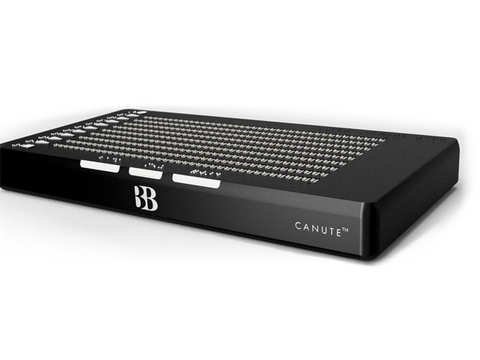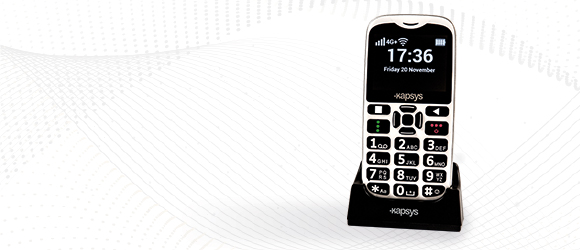Voice-Activated Assistive Devices: Simplifying Regular Tasks
A Guide to Life-altering Assistive Innovation for the Blind and Aesthetically Damaged
The improvement of assistive innovation has ushered in a transformative era for individuals that are blind or visually damaged, offering tools that enhance autonomy and improve day-to-day experiences. Technologies such as clever navigating gadgets and AI-driven applications are redefining exactly how users interact with their environments, while easily accessible reading services and smart home innovations guarantee to further boost the lifestyle. As these technologies proceed to progress, one need to consider not only their capabilities yet likewise their effect on cultivating freedom and inclusivity. What does this mean for the future of ease of access?
Smart Navigation Equipment
Smart navigation tools are reinventing the method people that are blind or aesthetically damaged engage with their setting. These innovative technologies, which incorporate general practitioners, audio feedback, and haptic signals, offer individuals with essential information about their surroundings, enhancing their freedom and wheelchair.
One prominent example is using clever canes equipped with sensing units that identify obstacles and supply real-time comments through vibrations or audio signs. These tools enable customers to browse complex settings, such as active streets or crowded public areas, with enhanced confidence. In addition, wearable tools, such as wise glasses, are being developed to help in identifying faces, reviewing message, and determining things, better boosting the user's spatial understanding.
In addition, smart navigating tools are progressively integrating expert system to assess data and adapt to users' choices. This customized method not only enhances navigation performance but likewise fosters a feeling of empowerment among individuals. As technology proceeds to advance, the capacity for smart navigating tools to develop a much more comprehensive and accessible world for individuals who are aesthetically impaired or blind stays encouraging, ultimately improving their day-to-day experiences and interactions.
Innovative Mobile Apps
Mobile applications are becoming powerful tools for helping people who are blind or visually damaged, providing a range of capabilities that improve daily living. These applications harness progressed innovation to help with daily jobs, improve access, and promote self-reliance.
One group of cutting-edge mobile applications concentrates on aesthetic recognition. Applications like Be My Eyes attach users with sighted volunteers via video calls, enabling real-time aid for tasks such as reviewing tags or browsing unknown environments. Apps like Seeing AI utilize synthetic knowledge to describe environments, reviewed message, and recognize things, offering customers with vital details at their fingertips.
An additional substantial location is navigating and alignment. Apps such as Aira and Close-by Explorer provide audio assistance, helping customers navigate city rooms easily. They provide customized support, enabling a more certain expedition of the environment.
Additionally, wellness and health apps deal with certain requirements, such as medicine administration and physical fitness tracking. These applications aim to cultivate a holistic method to well-being, guaranteeing that users can maintain their health and wellness separately.
Wearable Assistive Tools
Wearable assistive devices represent a substantial development in modern technology made to sustain individuals that are blind or visually impaired. These devices boost flexibility and freedom by providing real-time comments concerning the surrounding setting. Among one of the most notable wearable innovations are smart glasses geared up with electronic click cameras and sensing units, which can anchor recognize obstacles and relay crucial info through sound cues.

Another ingenious alternative consists of wrist-worn devices that make use of ultrasonic waves to discover obstacles and offer navigational assistance. These devices typically feature customizable setups, allowing customers to tailor the signals to their particular requirements.
The integration of fabricated intelligence in wearable assistive technology is additionally significant, as it continuously improves the precision and responsiveness of these devices. Overall, wearable assistive gadgets are changing the lives of the visually impaired and blind, fostering higher freedom and boosting lifestyle through cutting-edge solutions.
Obtainable Reading Solutions
Available reading solutions play a critical role in enabling people that are visually impaired or blind to involve with message throughout different layouts. These solutions encompass a series of tools and technologies created to improve analysis experiences, from conventional print materials to digital material.
One prominent service is Optical Personality Recognition (OCR) modern technology, which converts published text right into digital format, permitting customers to pay attention to or review the web content making use of screen viewers. In addition, specialized e-readers outfitted with text-to-speech capacities supply personalized reading experiences, allowing individuals to readjust font dimensions and history shades for boosted visibility.
One more effective technique is braille displays, which provide tactile feedback by transforming electronic message into braille. This allows people to go through touch, promoting higher self-reliance and access to literature. Mobile applications designed for checking out scanned publications or files can empower customers with immediate access to a substantial collection of materials (Smart glasses for the visually impaired).

Smart Home Technologies
Smart home technologies have revolutionized the way individuals who are visually damaged or blind connect with their living settings, boosting both freedom and safety and security. These cutting-edge options take advantage of automation and connectivity to create an available home customized to the requirements of users.
Smart speakers and voice-activated aides provide hands-free control over different devices, permitting users to readjust security, lights, and temperature level actions with simple voice commands. This capability lessens reliance on like it sighted aid and promotes a feeling of autonomy. Additionally, clever illumination systems can be personalized to deliver acoustic feedback or responsive cues, making it possible for individuals to browse their homes a lot more efficiently.
Moreover, protection systems equipped with clever video cameras and sensing units can send real-time informs to users, improving individual security without demanding visual verification. Automated door locks supply peace of mind, permitting users to protect their homes easily.
Integrating wise home technologies not only enhances day-to-day living but likewise urges social interaction via connected gadgets - AI-powered visual aids. With recurring developments in assistive innovation, the future shows up encouraging, as even more solutions will emerge to additional empower individuals that are aesthetically damaged or blind, guaranteeing a much more inclusive and independent way of life
Final Thought
Finally, the advancements in assistive technology for the visually impaired and blind stand for a substantial jump toward improving freedom and top quality of life. Smart navigation tools, innovative mobile applications, wearable tools, obtainable reading services, and clever home modern technologies collectively foster a comprehensive environment. This combination of modern technology not only boosts wheelchair and daily living yet likewise empowers people to engage totally with their environments, promoting better autonomy and participation in society.
Innovations such as clever navigation tools and AI-driven applications are redefining exactly how customers communicate with their surroundings, while easily accessible reading options and smart home modern technologies promise to more elevate the high quality of life. As technology proceeds to advance, the capacity for smart navigation devices to create an extra accessible and inclusive globe for people who are blind or aesthetically damaged continues to be promising, inevitably improving their daily experiences and communications.
Wearable assistive tools represent a considerable innovation in technology created to sustain people who are aesthetically impaired or blind. Among the most significant wearable modern technologies are smart glasses geared up with electronic cameras and sensing units, which can determine challenges and relay essential info with sound signs.
Smart navigating tools, innovative mobile applications, wearable devices, easily accessible analysis remedies, and clever home modern technologies collectively foster an inclusive environment.